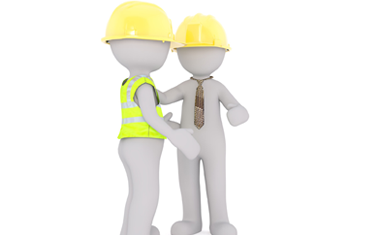Why Safety Professionals need to go beyond being the Squeaky Wheel

Sandy Smith wrote an article for ehstoday.com titled, “Former President of Chemical Company Sentenced for Federal Crimes Related to Employee Deaths“. This in turn caused Joseph Wesley, a safety professional, to write the following comment:
“As Safety Professionals we have to be the squeaky wheel. We have understand how to communicate the consequences of bad /unsafe actions to the next level leadership. The people that follow us are counting on it.”And he is absolutely correct. I really do not want to short-sell the importance of the constant drum beat regarding safety, but that is just the first step for safety. It is a countermeasure rather than a solution. So much more is needed.
In our safety book co-authors Brion K. Hanks and Scott Burr join me in saying,
“In regards to the unspoken cold war between production and safety, we have noticed that some industry leaders are expending enormous amounts of activity with relatively minor new achievement. Safety as a discipline needs an upgrade and a reboot. The result of this delusion (that activity equals achievement) is that people are routinely hurt and killed on the job... ...One of the reasons we succumb to trading-off safety for schedule or profits is because management and 'designers' throw problems over the wall instead of taking full accountability for what they create. All of this 'tossing off of responsibility' lands squarely on the worker in the field in bad weather with pressures and dangers all around. This is the worst place to try and solve problems that should have been solved upstream....”
Safety needs to be more systematic.
Here’s one more point. Safety professional often rely on OSHA or other safety inspections as the great countermeasure to unsafe situations. But this needs to change.
“Inspections can detect mistakes only after they have been generated (or when they are in the process of being made). Inspections are not predictive. They are not systematically integrated into decision-making and they are not scientific. They catch infractions; but don’t stop hazards from being created in the first place. They are better than nothing, but mistakes will be made because there are not enough inspectors to be everywhere at all times and no human can be 100-percent vigilant... Inspections will not assure that your workers are safe. In fact, inspections are the lowest form of assurance that can be provided. In order for inspections to be effective, they would have to be constant, omnipresent, vigilant, and redundant. But they are not constant; they cannot be omnipresent; and it is too costly to be 100-percent vigilant and redundant... Because inspections are countermeasures they are an ongoing cost. However, if you generate real safety solutions this savings is the money that you get back from that investment. If you develop these solutions it helps your company be more efficient and will keep your workers safer."
Along the same lines, speaking up, “whistle blowing”, sounding off about safety issues is important. In fact, it’s vital! And I applaud you because you have the courage of a lion and your heart is in the correct place. Having said that, it is a tiny part of what safety professionals can be doing today. Most people are entrenched in the belief that safety is in the way of production and that is simply not true. Industries need to completely change their mindset.
I dislike it when people come on forums and promote there products or services, but in this case I’m going to break my own rule and suggest you read the book “Safety Under Construction*”. It explains how you can get more done by working safer. In fact, the book explains the needed change in mindset and habits so that safety is THE KEY (the leverage point) for greater construction profits and schedule performance (re-tweet this).
Go forth and be safe and productive all at the same time.
* I'm one of the authors so I hope it's not too tacky that I mentioned it. I wouldn't have mentioned the book at all except the topics are so perfectly aligned and I wanted to add a few quotes from the book to contribute to the discussion.